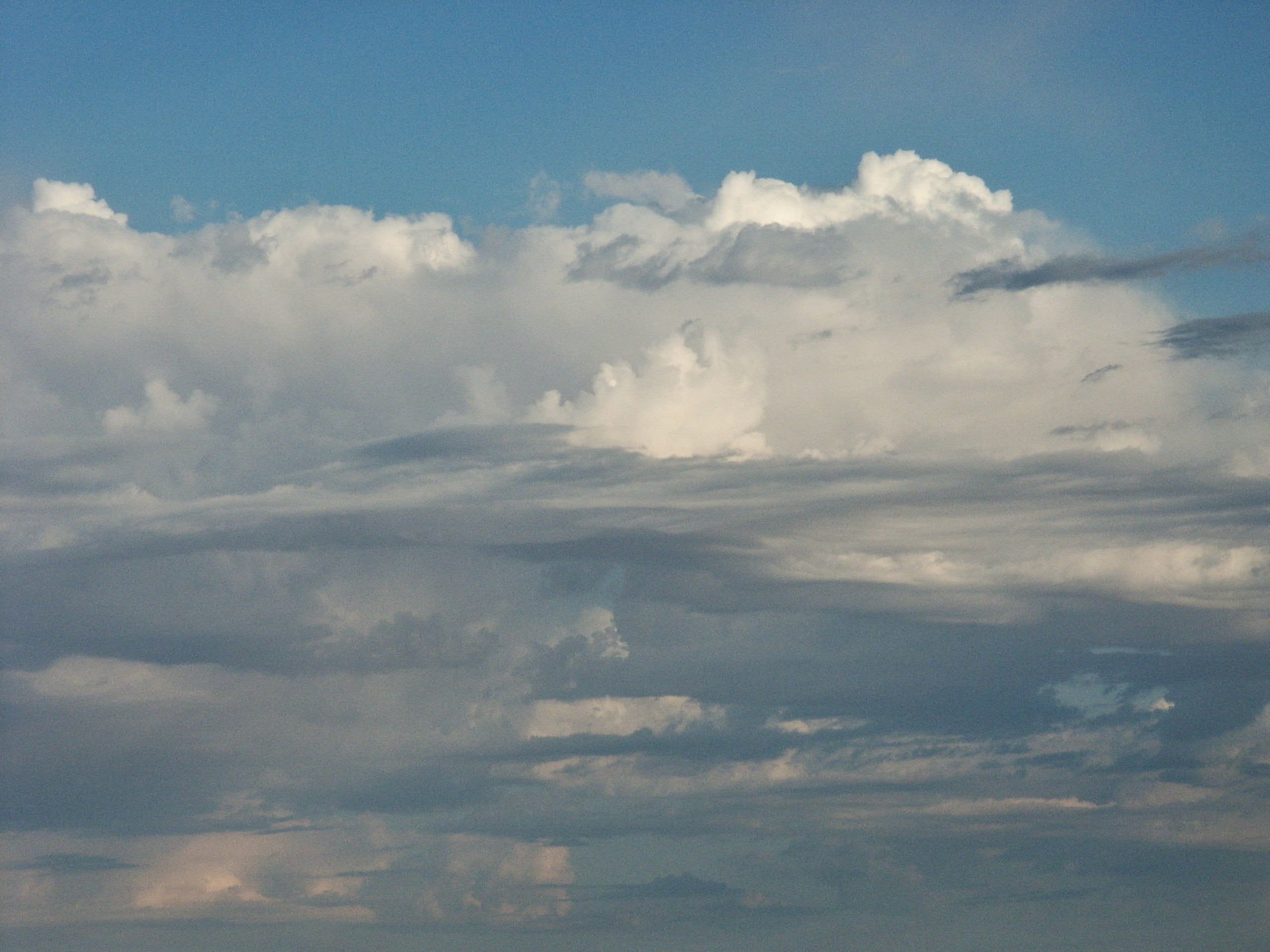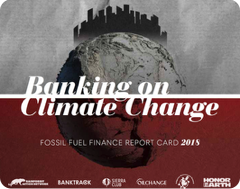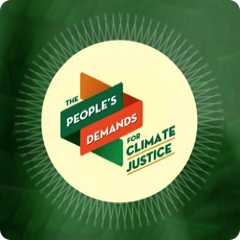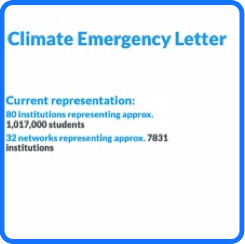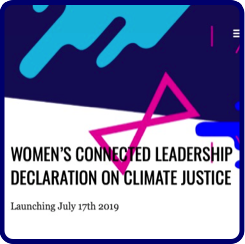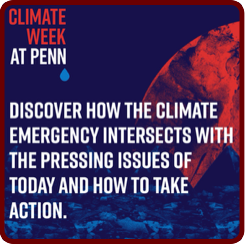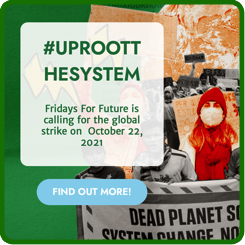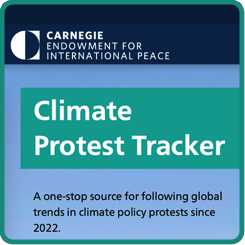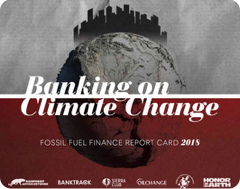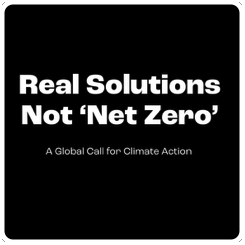
🔝
🔝
Information & resources
Climate Activist Defense @ Civil Liberties Defense Center
· “...exists to support a growing community of climate dissidents who take the risk of acting
commensurate with the scale and urgency of the crisis.”
Declarations, letters & statements
✔︎Info@⇾ Climate emergency declaration @ Wikipedia
✔︎Info@⇾ Spreadsheet database on governmental units declaring a climate emergency
· With links to relevant documents
✔︎Info@⇾Religious statements on climate change @ IPL
✔︎Info@⇾Climate Change and Human Rights declarations
2000 Nottingham Declaration on Climate Change
2004 Climate Justice Declaration
2008 Niue Declaration on Climate Change
2013 Declaration on Climate Justice
2015 St. Julien's Declaration on Climate Justice
2017 Climate Damages Declaration
2017 Fairbanks Declaration of the Foreign Ministers of the Arctic States
· 10th Ministerial meeting, Arctic Council
2017 UNESCO Declaration of Ethical Principles in relation to Climate Change
Faith & Science Declaration on Climate Change @ United Planet Faith & Science Initiative
Women's Connected Leadership Declaration on Climate Justice
Select readings in climate change activism & civil disobedience
· In reverse chronological order
Civil disobedience by scientists helps press for urgent climate action
· 2022 ~ Stuart Capstick et al. ~ Nature Climate Change
· Scientists brought to attention by civil disobedience by leveraging the credibility and authority
associated with their line of work
· Shaping public opinion, these scientists help shift public influence as well as policymakers
· Moral and ethical influence, scientists engaging in breaking norms challenge status quos and
highlight the need for action.
World Scientists’ Warning of a Climate Emergency
· 2020 ~ William J Ripple, et al. ~ BioScience
· In 2019, 11,000 scientists issued warning of climate emergency
· This warning covers a large list of concerns affecting land and ocean (including ocean acidification,
gas emissions, and deforestation)
· An effort by scientists to influence both policymakers and as well as increase public awareness on
the potentially catastrophic issue of climate change.
Conservation must capitalize on climate’s moment
· 2020 ~ Charlie J. Gardner, et al. ~ Nature Communications
· Gardner is a conservationist with extensive expertise in the field work, capitalizing on his knowledge
of climate crisis.
· Gardner's contribution to innovation and research are valuable assets to identifying impacts on
climate change
Climate Change, Environmental Terrorism, Eco-Terrorism and Emerging Threats
· 2020 ~ Spadaro, Paola Andrea ~ Journal of Strategic Security
· The article cites the acidification of oceans, the depletion of marine food supplies, weakened
forest resilience, reduced crop yields, and fragility in the food supply chain as major drivers of
radical actions, in response to governments and organizations that these far-left individuals
view as having not done enough.
· The essay goes through a brief history of eco-terrorism, including particular study into ELF as
one of the founders of the concept. This also includes a discussion into the term “eco-terrorism”
itself; the article claims that, between 1979 and 2010, ELF activities caused zero injuries or
deaths, despite being among the main causes of anti-terrorism expansions in law enforcement.
However, there are other notable examples––such as the Justice Department and the Animal
Rights Extremists––that have splintered from other groups and are willing to use more violent tactics.
· Due to the existence and radicalism of certain groups, a much larger swath of environmental
organizations have been the subject of repression. The United Kingdom, for example, lists two
major peaceful organizations––Greenpeace and Extinction Rebellion––in their police
counterterrorism guides. Spadaro posits that this repression may be a turning point in the opposite
direction, inspiring people to take action with these nonviolent groups as a protest against
government overreach.
Civil Society and Global Governance
· 2020 ~ Ginanjar, Wahyu and Ahmad Mubarrok
· Journal of Contemporary Governance and Public Policy
· Subtitle: The Indirect Participation of Extinction Rebellion in Global Governance on Climate Change
· Dives into the issue many disobedient movements have with modern climate conferences and
solutions: politics. Lacking proper enforcement methods and guarantees for participation, the
major proposed solutions such as the Paris Agreement tend to fall apart and prove ineffectual.
Instead of depending on politics to sort themselves out, climate issues––as many other fields––must
have pressure come from below to find any real solutions.
· Examines Extinction Rebellion, among the most active modern civil disobedience groups devoted
to environmental causes. They summarize their three main demands––“Tell the Truth;” “Act Now;”
and going “Beyond Politics”––and their organizational history and tactics, including using
human blockades, and comparing the group to those present during the 1960s American Civil
Rights Movement.
· The article also examines how Extinction Rebellion participates in political decisions and the
overall conversation regarding climate change. Extinction Rebellion fights in the realm of
“institutional evolution,” looking to rework the fundamental methods by which we tackle these
problems and the groups that are in power to do so. Specifically, they advocate for––as many
other modern climate activist organizations do––the creation of a citizen’s assembly, or a council
made up of non-politicians to investigate and drive climate policy forward free from interests such
as corporations or re-election campaigns.
Scientists must act on our own warnings to humanity
· 2019 ~ Gardner, Charlie J. and Claire F. R. Wordley ~ Nature Ecology & Evolution
· A brief summary of the scientific community’s efforts to broadcast the need for urgency, including
a 1992 address by the Union of Concerned Scientists, and again in 2017 in an open letter with
over 15,000 signatories.
· The authors argue that, historically, pressure must come from below in order to affect political
change, citing examples such as Martin Luther King Jr. and Mahatma Gandhi. Many scientists
have participated in institutional democratic reforms, such as advocacy, petitions, and voting,
but to little effect; despite these actions, the best the international community has come up with
does not nearly cover all that is necessary.
· “As conservation scientists and members of Extinction Rebellion” [see: “Civil Society and Global
Governance”], the authors make their case for the scientific community to go further in action
than they previously have, by participating in and organizing massive, nonviolent disruptive action.
They provide several different ways for scientists to get involved, and debunk multiple arguments
made by scientists against participating in these actions, citing a study that proved that
participating in civil disobedience does not alter the perceived credibility of scientists.
· Scientists must accept collaboration as a valid method to conduct better research
The Earth Liberation Front and Environmental Terrorism
· 2010 ~ Leader, Stefan and Peter Probst ~ Terrorism and Political Violence
· A deep dive into the Earth Liberation Front (ELF), a radical organization willing to employ any
methods in order to push for environmentalist causes—reveals patterns common to many
disobedient climate organizations.
· Examines the decentralized, non-structural nature of ELF: instead of having any hierarchical
guiding organization or individual leaders, the organization relies on individual actors to take
part in and organize small local actions, operating on a national understanding of the organization
taking the main role in guiding actions and recruitment.
· While the ELF was often willing to use violence and other terroristic means, they avoided
injuring humans. They perfectly fit the adage that terrorists want “a lot of people watching, not
a lot of people dead,” by Brian Jenkins, an American terror expert.
Testimony of James F. Jarboe, Domestic Terrorism Section Chief, Counterterrorism Division, FBI
· 2002 - Jarboe, James F.
· Before the US House Resources Committee, Subcommittee on Forests and Forest Health
· An early look at the Federal Bureau of Investigation (FBI)’s policies and interests in climate
disobedience. Jarboe describes how “special interest” terrorism––terrorist acts motivated by
individual, particular goals rather than general ideology––became an emergent threat, and
climate disobedience was at the forefront of this.
· Covers the challenge of confronting climate disobedience movements, referring in particular to
the Earth Liberation Front and the Animal Liberation Front, but in a widely applicable way to
many disobedience groups: decentralization. By denying law enforcement easy opportunities to
infiltrate groups and trace individuals back to larger cells, this structure––which is common in
left-wing environmental groups––allows the group to remain elusive.
· Jarboe takes the Committee through a brief history of violent ecological disobedience. The first
notable acts were in 1977, when members of Greenpeace who lost faith in the traditional
organizing methods of the organization formed the Sea Shepherd Conservation Society and
attacked commercial fishing operations.
Beyond arson? A threat assessment of the Earth Liberation Front
· 2010 ~ Gary A. Ackerman ~ Terrorism and Political Violence
· Investigates the relationship between political instability and economic growth in regions such
as Sub-Saharan Africa
· Ethnic divisions could have specific impacts that may exacerbate preexisting negative economic
conditions.
· Recommends implementing and creating new policies to strengthen democratic institutions
improving governance.
Climate activism & advocacy
Contents of this page:
· Information
· Declarations, letters & statements
· Select readings in civil disobedience & climate change
Also see:
· NGOs page where climate-focused NGOs, many if not most of which
focus on aspects of climate justice, are highlighted
Dylan Johnson Restrepo (2023) & Max Lerner (2022) of Brandeis University contributed to this page.
A note on climate activism resources
This page provides a top-level guide to "resources & tools" regarding the practice of climate change activism. Note that the roots of climate change activism reach deep into the history of environmental activism, and that it is typically a judgement call as to whether any particular resource belongs on this page.
For example, a wide array of "activist" resources focused on promoting renewable energy could be placed here, but they can largely be found on the Renewable Energy page.
In general, for climate change activists looking for more "content-based" information, a good next-place to see are the main Mitigation and Adaptation pages and the Divestment section of the Fossil fuels page.
